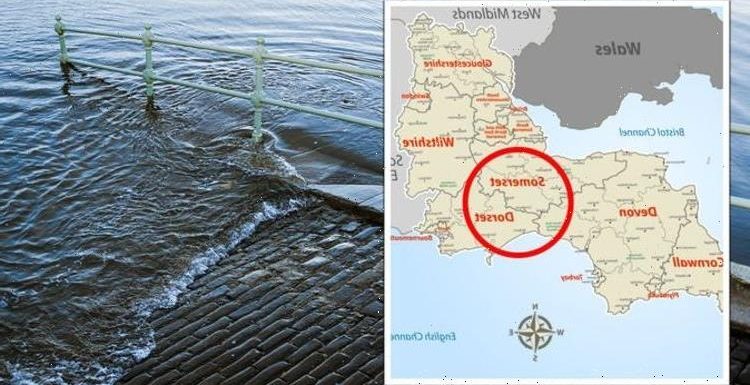
Global warming: London under threat from rising sea levels
We use your sign-up to provide content in ways you’ve consented to and to improve our understanding of you. This may include adverts from us and 3rd parties based on our understanding. You can unsubscribe at any time. More info
Popular holiday destinations across the UK could be wiped out by floods due to climate change, excerpts have warned. Those most at risk include coastal and low-lying areas, vulnerable to annual flooding. In 30 years’ time, they could be completely submerged in water if action is not taken.
Parts of North Wales and eastern England are likely to be underwater by 2050 because of rising sea levels, which could wash away railways, swamp farmland and holiday resorts.
In the south, coastal areas and river valleys would be badly affected with the M4 motorway submerged close to the Severn Bridge, according to Climate Central, a non-profit organisation focused on climate science.
It presented the severity of the threat in a new searchable map.
Climate experts have long since warned that settlements along areas with soft, eroding shores in England are “not possible to save”, with residents likely being required to leave their homes in the future.
These include low-lying areas in East Anglia, Lincolnshire, parts of the south-west such as the Somerset Levels, and the coast between Liverpool and Blackpool in the north-west.


In 2018, a report from the the Committee on Climate Change (CCC) said existing plans to “hold the line” in many places – building defences to keep shores in their current position – were unaffordable for a third of the country’s coast.
The CCC said that discussion about the “hard choice” needed must take place and start with communities moving inland.
Baroness Brown, at the time chair of the CCC’s adaptation committee, said: “The current approach is not fit for purpose.
“This report is really a wake-up call to the fact that we can’t protect the whole English coast to today’s standard.
“We could see as much as a metre of sea level rise before the end of the century, so within the lifetime of today’s children, and that has a major impact on coastal flooding and erosion.”
JUST IN: Sturgeon’s ‘unsophisticated’ IndyRef2 deal torn apart

Professor Jim Hall, a member of the committee, added: “We are not prepared.”
The entire coast of England is covered by the shoreline management plans, developed by the Environment Agency and local councils, and would cost £18-30bn to implement.
But they have no funding and no legal force.
The CCC analysis found that, for more than 150km of coast, plans to hold the line would cost more than the property and land that would be protected.
It also found that 520,000 properties are already in areas with significant coastal flood risk – and this may treble to 1.5 million by the 2080s if no action is taken.
DON’T MISS
Coronavirus: AstraZeneca hails results of vaccine alternative [REPORT]
China’s HYPERSONIC missile facility to launch rockets at 23,000mph [INSIGHT]
Egypt breakthrough: ‘Curse’ evidence found in ‘forgotten’ account [ANALYSIS]


At the time of the report, around 9,000 properties were at risk from coastal erosion and, in 2014, the Environment Agency suggested that 7,000 homes in those mentioned areas would fall into the sea in this century.
But CCC analysis calculated this figure to rise to 100,000 by the 2080s.
Meanwhile, according to Climate Central’s map, huge areas of Cardiff and Swansea in South Wales could be left under water.

Almost all of the flat, low-lying land between King’s Lynn and Peterborough on the east coast of England may also become submerged.
Since 1993, sea level growth has been accelerating to an average of 0.12 to 0.14 inches a year, roughly twice as fast as the long-term trend.
Some studies appear to overstate the crisis, however.

In 2019, a paper projected that sea levels would rise between 30cm and 34 cm by 2050.
But so far, the increases have been on a much smaller scale.
Source: Read Full Article